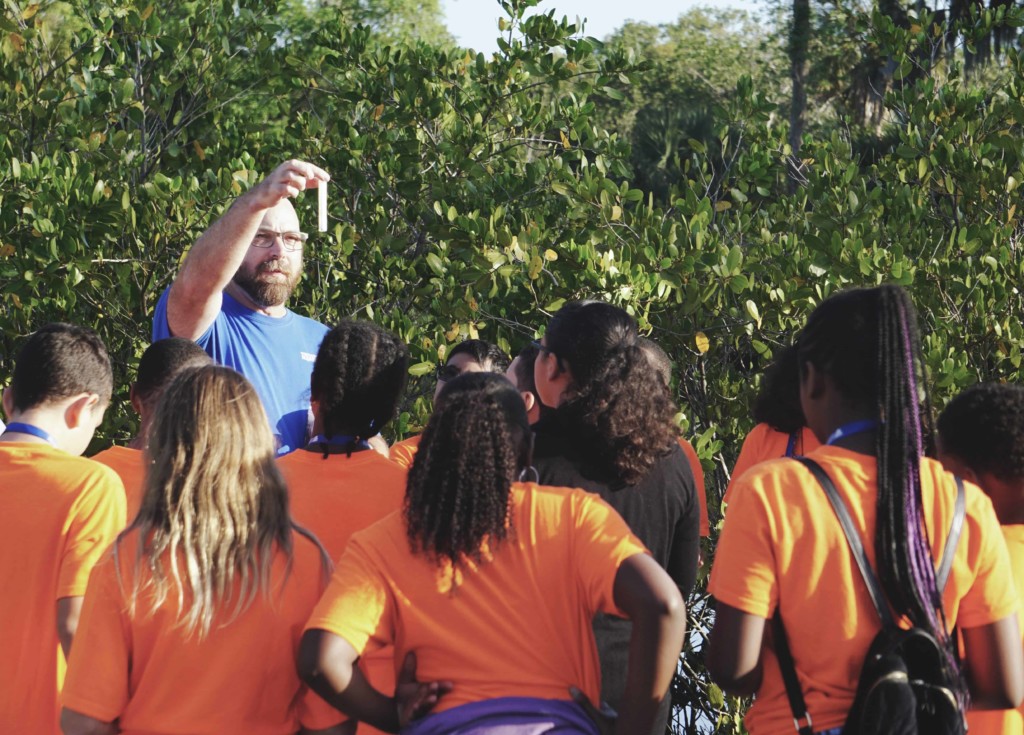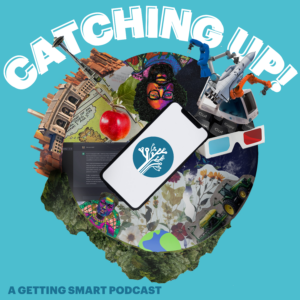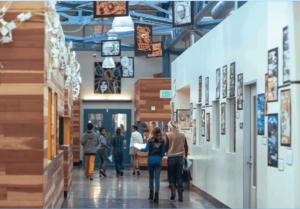Project-Based Learning Provides Path For Increased Awareness of Self, Others and the World

Often in education, we are looking for the next great thing: curriculum, technology, program or even instructional approach. What’s problematic here is that we’re not always really invested. We pilot, and before we have any real implementation, something has changed. It might be due to leadership, other initiatives, the board, or funding, but the priorities have shifted and we’ve moved on to yet another thing.
What’s very relevant to me about project-based learning (PBL) is not only does it offer an instructional pedagogy that works, but it also addresses so many of our needs and does so in a way that is adaptive to our ever-changing environment, students and the world. I’ve been advocating for some time—whether it’s student engagement, deeper thinking and learning, collaboration, technology integration, relevance, real-world application, or career development—that PBL can really do it all. In addition to the aforementioned, it’s also the best means to address social-emotional learning that allows students to truly have a better understanding and appreciation of themselves, those around them and the world at large.
In addition to all of the technical skills the world will continue to demand from our students, other skills of equal or even greater value are social intelligence, cross-cultural competency and cross-cultural literacy.
Let’s examine in more detail how PBL can deliver on greater awareness of self, others and the world.
Awareness of Self
There are several foundational elements to PBL in terms of pedagogical design. A couple of them are intended specifically to increase the learner’s awareness of self.
One example is reflection. John Dewey, one of America’s original educational reformers, posited early on that “We do not learn from experience … we learn from reflecting on experience.” What Dewey was suggesting was that real learning, i.e., deeper learning and higher-level thinking, was going to stem from the metacognitive process of thinking about what we’ve learned.
Metacognition is at the core of the PBL process. When done well, students not only engage in project-based endeavors but also are challenged by their teachers and others throughout and at the conclusion of the work to reflect on all aspects of the project. This means what worked, what didn’t work, what could or should happen next time, and what would one do differently. This results in the learner having a greater understanding of their contribution to the work and process, their role or roles in the team and their own growth (academic, social and more). The learner can see themself as an active part of the learning process and that nothing about it is static. They can be part of the problem or solution and that is the journey into self-awareness and discovery.
Speaking of active participants, another foundational element to PBL is student voice and choice. Again, when PBL is done well, there is an opportunity for the learner to be involved in how the project is executed. It could be a choice on how to demonstrate the learning (public product), what focus, topic or specific path to take in response to the overall challenging problem or question (driving question), or even whom to collaborate with as well. Good project design and learning do not require choices on all of these at all times, but there should be some opportunities (often just from a menu of choices) of what a learner may want to pursue in terms of the PBL experience. This leads to greater learner ownership and ultimately of the realization that their ideas, opinion and work matter.
Awareness of Others
Collaboration is another word that has almost become a cliche. And that’s sad because it represents more than ever one of the most important skills in the world of work. Indeed, most of us know when we reflect upon our experience that work becomes higher quality when quality collaboration takes place. Ideas, innovations, processes, products and breakthroughs are often made possible by the results of the collective experience.
High-quality PBL requires a great deal of collaboration. Learners not only collaborate with their teachers and peers but also with other staff, industry professionals, business leaders, community members, parents and others. This not only increases the quality of the work but also the awareness we gain of the contribution of others. What do others think? What can their contributions be? What can we learn from them? These collaborations produce many byproducts. In addition to a richer learning experience and higher quality work, they allow the learner to meet potential professional mentors, employers, experts and role models. These become the foundation for a student’s first real Professional Learning Network. The collaboration and relationships that develop may indeed impact the learner for life by setting them on a specific career path or broadening their horizons.
As students begin to address challenging real-world problems, issues or questions, they begin to see how things connect and how interrelated we all are. Teachers, as well as employers, often say that they want our graduates to be able to demonstrate empathy for others, degrees of emotional intelligence and things like cross-cultural literacies. This can only happen by allowing learners to have the opportunity to partner with a diverse set of collaborators in pursuit of authentic, real-world and relevant work. For example, many projects have the opportunity for students to partner with various local, national or even international non-profit organizations. These types of collaborations demonstrate to learners firsthand that there are people and organizations that dedicate themselves to solving problems and helping others, while also showing that a student’s work can be a significant contribution to the larger work in the world.
Awareness of The World
When students are challenged to address real-world issues, they begin to see themselves and others as part of the larger global society. Indeed, one could argue that many of our biggest problems exist or are made worse by our lack of individual connection to the larger global community. High-quality projects and PBL can change that.
Indeed, not only does learner awareness of global issues increase, we actually make progress in addressing these issues. Think about it. We often hear the term “think globally, act locally.” This is not just a common expression, but a real attempt to engage people and make significant progress toward solving the biggest problems facing the planet.
We do this because it works. Another foundational element of PBL design is authenticity. This occurs when learners are working on real-world problems using real data, technology, partners, and resources. This work will be public and potentially beneficial to others. Additionally, we also do it because this is where the jobs are. Jobs are created and grown as we work to address the real problems facing our world. Our students are ready to tackle these. They have a voice. They have the tools and resources. And they are not afraid to collaborate and form new communities poised for the problem-solving work that needs to be done.
Education may always have a series of intentions or expected outcomes. But beyond meeting standards, assessing learning and even engaging students, there might not be anything as important as the process of self-actualization. Maslow argued that our ultimate need as a person was “the full realization of one’s potential and of one’s true self.” Through the process of self-discovery, the awareness of others and the realization of the larger global community, PBL can do just that.
For more, see:
- Preparing Students For Future Success with PBL and SEL
- 4 Holistic Classroom Ideas Inspired by Maslow’s Humanist Approach
- Educating The Whole Child Through PBL
Stay in-the-know with innovations in learning by signing up for the weekly Smart Update.







0 Comments
Leave a Comment
Your email address will not be published. All fields are required.